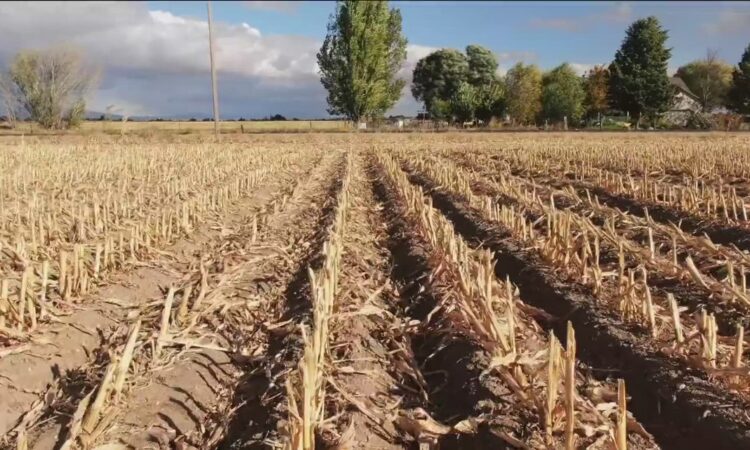
Tariffs, trade talks, and now the government shutdown are among the several things keeping producers on edge.
BOISE, Idaho — Agriculture is similar to gambling. Sometimes you’re up and sometimes you’re down, and it’s always changing.
The prices, policies, even the weather, but right now, many Idaho producers say the challenge isn’t just one thing, it’s nearly everything.
University of Idaho ag extension economist Brett Wilder said it’s been a whirlwind year for agriculture.
Tariffs, trade talks, and now the government shutdown are creating delays.
There is some good news from those headlines and some bad news.
“For the crop sector, we have a lot of supply. We’ve overproduced to the point where grain bins are full in the Midwest, running out of places to put things. And ultimately, that has some downward pressure on prices,” said Wilder.
The good news is that Idaho is a large livestock state, so ranchers are getting cheaper livestock feed, but for crop farmers, that’s the bad news.
They aren’t getting paid as much for their crop.
Also, input costs are still hammering producers across the board.
“After COVID, that kind of 2020 window, we had that period of high inflation,” he said. “We saw that for basically all input items for all sectors across agriculture, and it’s just stayed there. I was just looking at some USDA data for this and for the U.S. as a whole. It’s estimated that just in terms of intermediate product expenses, so electricity, fertilizer, pesticides, fuel, the basic things that go into producing a crop. We spent about $240 billion in 2020 as an agriculture industry, and that number is somewhere closer to $325 billion in 2025, so almost a 50% increase just in terms of input costs. And so for some of these guys, they’re doing that with very similar yields and lower prices for their commodities, and so those farmers are really in a tight spot.”
Add to that the uncertainty overseas.
Wilder said tariffs and trade negotiations lead to weaker sales of pulse crops, things like chickpeas and dry beans.
While there is optimism about recent trade deals, there is also concern.
“There is concern that long-term deals are going to be harder to get done just because of concern of volatility, what that’s going to look like, but trade is still happening,” he said. “Product is still being sold from the state of Idaho, from the United States, to other countries in the world.”
Then there’s the longest government shutdown in history, which is creating ripple effects in ways most people don’t realize.
“The big risk is, are people going to stop showing up to work? The headline I see a lot is air traffic controllers,” he said. “What I think about a lot is, are the meat inspectors going to keep showing up? Are the people who allow us to both export and import agricultural products going to stop showing up?”
Wilder spoke to a beef producer who is working on food-safe beef tallow, but can’t get the final approval until all the USDA employees come back.
At the restaurants and grocery stores, government workers aren’t getting their paychecks, so they can’t buy food, which is impacting demand.
“I think agriculture, as a whole, would desperately like to see that shutdown end, because there’s going to start to be a lot of pain points if we don’t,” he said. “If we lose agriculture producers, if we lose that revenue to the state, it’s going to start breaking down communities. It’s going to start affecting everyone’s everyday life. Not only that in the short run, we also have long-run impact of more difficulty to access food, more difficulty to access food that you know where it came from, longer supply chains, more opportunities for disruption, and inability to get what you want when you want it all the time.”
Wilder said bankruptcy and delinquency rates are increasing, margins are thin, and the combination of high costs, trade volatility, and the shutdown is creating one of the most unpredictable stretches producers have seen in years.
“Bankruptcy rates are increasing,” he said. “Delinquency rates are increasing. Granted, those are increasing off of what was historic, all-time lows. So coming up into higher levels, that would be a little bit more normal with historical trends. However, anytime you see those things increase, it’s not great, and margins are very, very thin. So when margins are thin, that promotes trying to chase economies of scale, trying to be the most efficient, trying to get bigger, so that you can bring your costs down, $1 an acre or $1 a head.”




